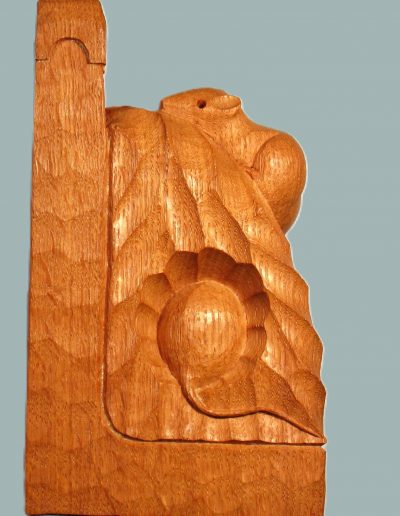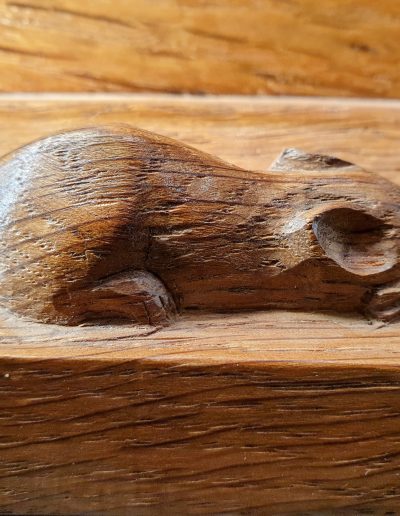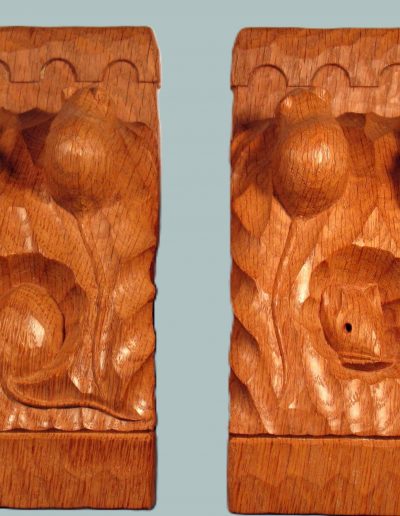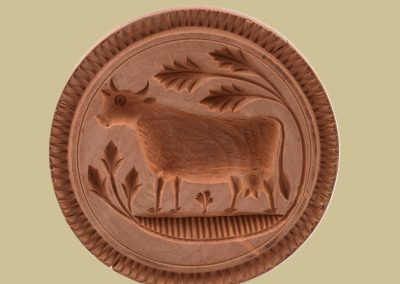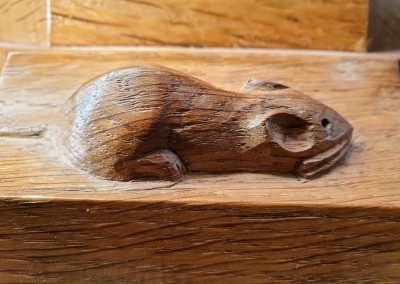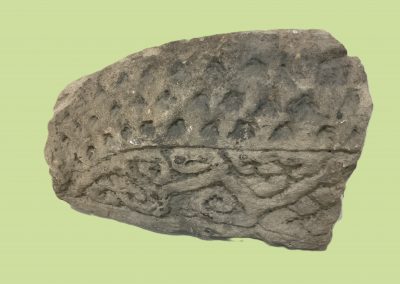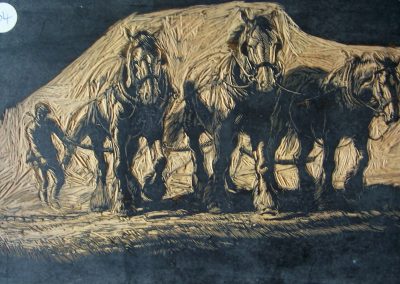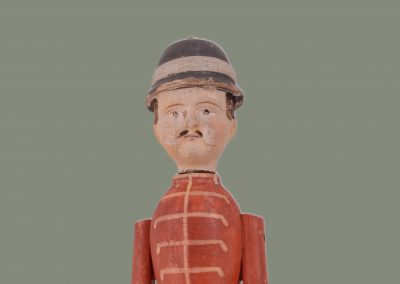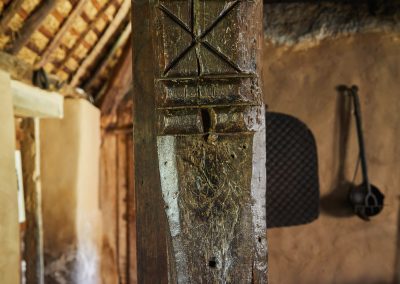A Selection of ‘Mouseman’ Furniture
North Yorkshire
Discover how the addition of a humble little mouse transformed North Yorkshire furniture into collectors’ items.
A Pair of ‘Mouseman’ bookends
Craven Museum & Gallery, Skipton
These bookends are very distinctive due to the inclusion of a little carved mouse. It is this small detail that acts as the ‘signature’ for what is known as ‘Mouseman’ furniture.
Robert Thompson (1876 – 1955) was born and lived in the village of Kilburn in North Yorkshire where he established an oak furniture business which still operates today. Works produced, from bookends like these to large tables and chests of drawers, include a small mouse somewhere.
The bookends are unusual for having so many mice! They have been carved from solid oak, with the flat side to keep books in place.
The decorative sides show little scenes where the mice appear to burrow in and out of the wood. The wood on this side has chiselled, possibly to look like the mice have been nibbling at it.
Oak is a hardwood and is often used for furniture because it is very strong and hard wearing. ‘Mouseman’ items remain very popular and nowadays are collectible items, often selling for large sums of money.
Watch the Video to explore these objects further
Watch The Video With Subtitles
A prolific collector
Craven Museum’s collection of Mouseman furniture once belonged to Kenneth Hodgson. Hodgson was an avid collector who went without holidays to fund his passion. He furnished every room in his Harrogate house with it.
By the time he died, Hodgson had gathered over 170 pieces, many of which went to Craven Museum, with other pieces being received by museums including the Victoria and Albert Museum in London.
Find out more on Craven Museum & Gallery’s website.
‘Mouseman’ thermometer
Craven Museum & Gallery, Skipton
Nowadays, many homes have thermostats built into their heating systems, but in the past telling the temperature in a home would have needed a thermometer like this one.
This object gives us a good example of how the embellishment of a practical object with the little mouse can turn it into a decorative one too.
Talking Points
How easy do you think it would be to carve wood into something like this? Do you think spending an extra 45 minutes carving a mouse onto a piece of furniture is a good investment of time?
If you were to leave a distinctive trademark on every artwork you made, what would it be? Why?
What other qualities do you think have helped to lead to this furniture being collected and having a good reputation? Why do people carve from oak?
Do you think the objects Thompson made would be as popular if they did not feature the little mice?
The bookends are very robust and quite heavy. Why do you think this is important?
Would like to own a ‘Mouseman’ object like these? Why? Which object would you choose?
Nowadays, ‘Mouseman’ furniture is still being created in the original studio. Do you think it matters that it’s made by different people?
Do you think functional objects should also be decorative? Why/why not?
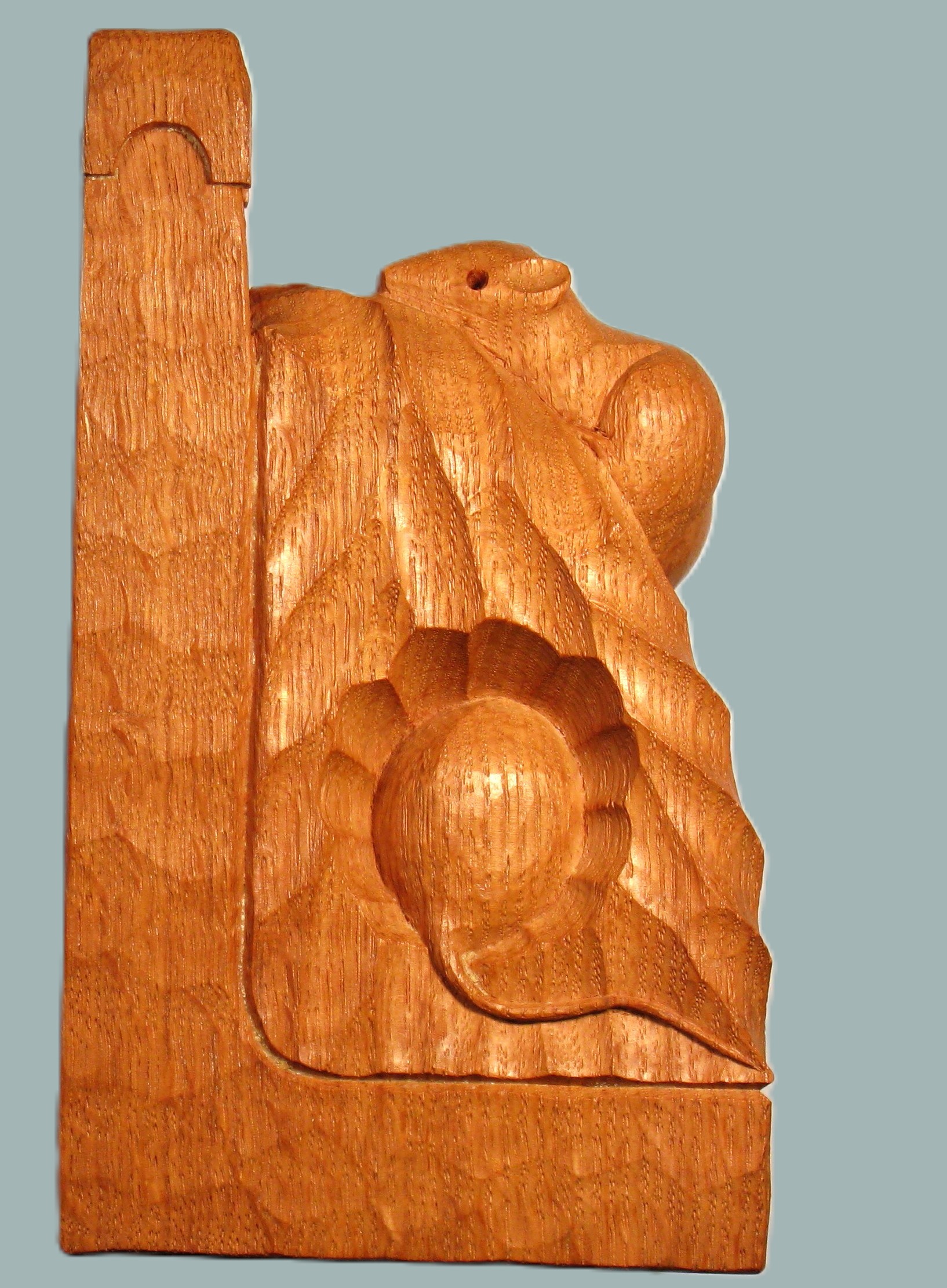
In the Classroom
Hotseat
Robert Thompson died in 1955. Imagine what he would say now if you could interview him about the impact his furniture still has in the 21st century.
What would you want to ask him? Try interviewing a member of the class in role as Robert ‘Mousey’ Thompson to find out.

Hands on History
The collection at Craven Museum & Gallery contains a substantial number of pieces collected by Kenneth Hodgson.
You can find a whole room of ‘Mouseman’ furniture, including chairs to sit on, at The Green Howards Museum in Richmond.
Discover more carved objects


